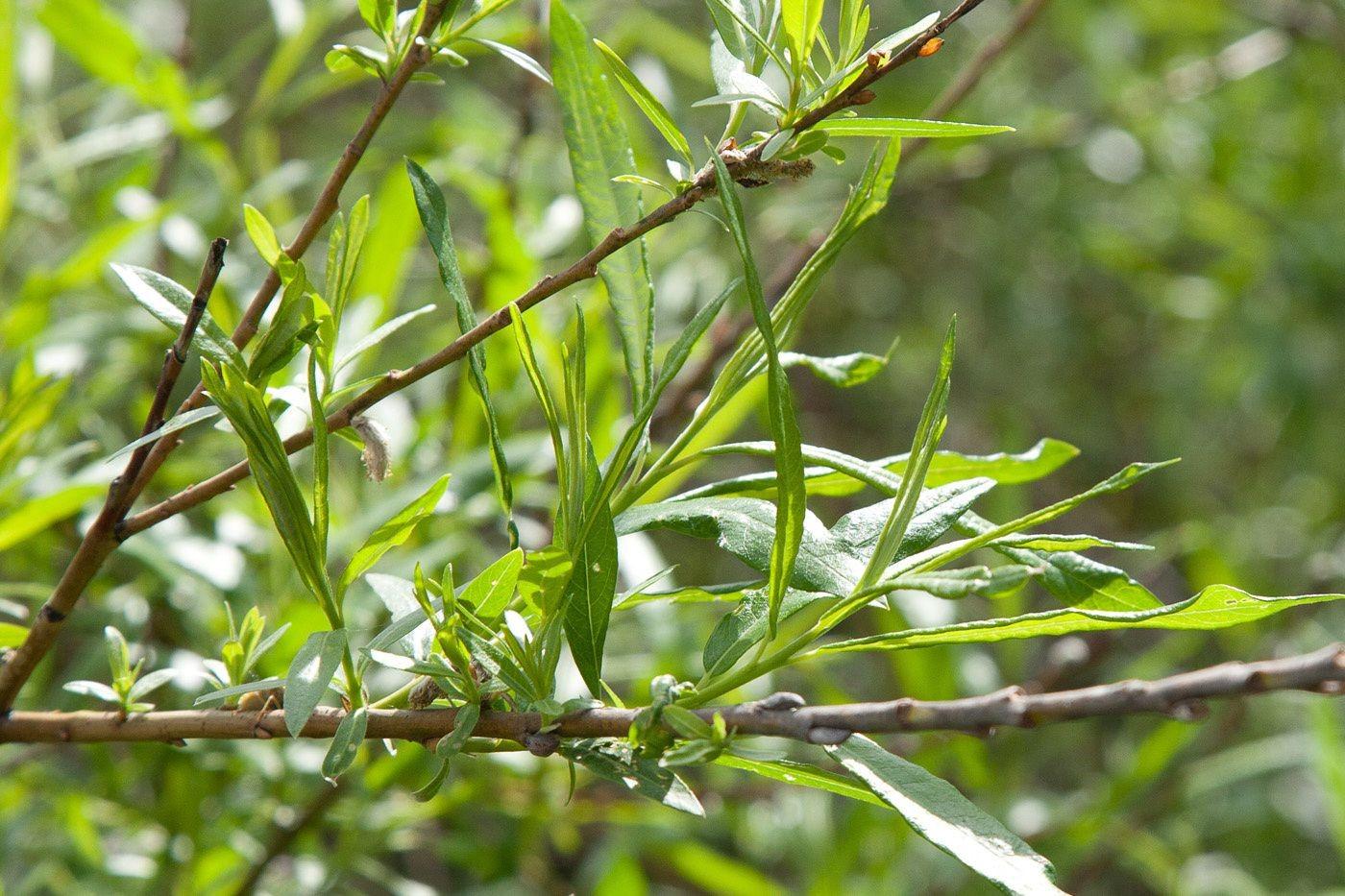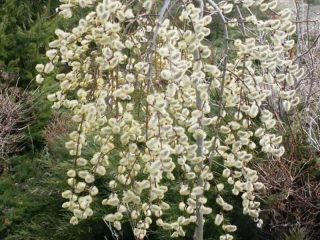Content
Willow twig is one of the representatives of a large family, which is distinguished by a variety of shapes and shades. The plant is perfectly adapted to the wild environment, growing without shelter even in the northern Russian regions. Willow can be used in everyday life and in design.
Description and characteristics of willow
Due to its compactness, the crop resembles a tall shrub. It reaches 4-5 m in height. In favorable conditions, the plant turns into a full-fledged 12-meter tree with a voluminous green crown.
The twig willow produces long branches that serve as material for weaving baskets, decorative items, and furniture. The wood is also used for medicinal purposes - it contains a lot of tannins and tannins. In Yakutia, entire farms are fed with tree bark.

Fences are made from thick vines
Salix Viminalis (willow) has a straight trunk that rarely shows signs of deformation.There are shoots on it, often hanging down and unraveling along the ground. The lateral shoots of willow develop in a horizontal direction.
The leaves grow up to 14 cm. Young buds have a gray tint, which becomes rich green as they grow. The texture also changes - adult specimens become overgrown with fluff. Willow produces very narrow leaf blades.
The flowering stage of a tree begins even before the leaves leaf out. The twig willow is covered with catkins, which contain both pistils and stamens. They have an elongated structure and a weak aroma. They reach 4-5 cm in length. In May (sometimes later), the fruits of the tree turn into a small box.
Willow willow loves spacious, moist areas with access to constant light. The tree is unpretentious to the location and can grow quietly in the shade. The most interesting quality for a Russian gardener is frost resistance. She is tall in the willow tree.
Where does twig willow grow?
The plant has been almost completely exterminated, so it is difficult to find in the wild. Single specimens grow in European and eastern countries, usually near bodies of water, on islands, in the steppes.
Advantages and disadvantages
The willow tree can be a wonderful addition to the garden. It is unpretentious to soil and lighting. The tree is a great find for a beginner.

Long twigs of willow bend easily and are not afraid of destruction
Pros:
- decorativeness;
- beneficial properties of the bark;
- moisture resistance;
- strong immunity;
- frost resistance.
Minuses:
- seeds and cuttings of the plant are very difficult to obtain.
Planting willow
If the gardener is lucky enough to get planting material, twig willow can be propagated in almost any area.The plant is undemanding and grows quickly.
When planting a seedling along with a lump, a hole is dug in accordance with the size of the lump, plus 40 cm. If the willow has an open root system, dig a hole 50 cm deep and 45 cm in diameter. Be sure to provide a drainage system when planting a tree.
Willow prefers fertilized soil. The soil is fertilized with manure or chicken droppings. If the substrate mainly consists of clay, add river sand. Planting begins in April or at the end of March. When growing twig willow with an earthen clod, work can be postponed until the autumn season.
When disembarking, the main thing is to be careful. The root system of seedlings is fragile and sensitive, so the roots must be straightened carefully.
Caring for willow
After planting the tree, the first watering is carried out. It must be plentiful so that the willow does not suffer from drought. It is better to overwater a little than to underwater - this is the principle that a gardener should be guided by. On dry days, up to 50 liters of liquid are poured onto one seedling. The optimal frequency of watering a tree is twice a month.

Fertilizing is applied in spring and summer
At first, the emphasis is on mineral complexes, and towards the end of the growing season, phosphorus-containing fertilizers and potassium sulfate are used.
The root zone of the tree is cleared of growth. They try to turn it into a habit. The fewer competitors a tree has, the faster it will grow. Fallen vegetation is removed immediately, otherwise larvae may appear in it.
Reproduction methods
In the wild, twig willow reproduces by seeds. But the easiest way to propagate it is by cuttings or layering. The shoots of the tree are pruned until the leaf blades dissolve. Select samples aged two years and older. The material is immersed in Kornevin and planted in fertile soil, leaving two buds on the surface.
Diseases and pests
Willow willow can develop scab as well as fungal infections. Their appearance is associated with an abundance of moisture - stagnation from rain, frequent watering. Microorganisms quickly take over the tree. First, the lower leaves die, then the disease spreads to the top. In strong winds, fungi easily spread to other plantings. Fungicides are used to protect the tree.
As for pests, twig willow can suffer from caterpillars, aphids, and flies. She also has enemies in the world of flora - dodder. The weed must be burned, otherwise it will spread the seeds throughout the area. Insects are eliminated using insecticides.
Application in landscape design

Planting along the fence

Creating a hedge

Portable option in a pot

Another fencing option

Designer weaving from living vines
Conclusion
The willow is a plant that is under threat of extinction. For centuries, man has used the tree for personal purposes. The bark of the willow tree is an excellent material. Currently, cutting down trees is prohibited. Due to the small number of willow, the gardener needs to work hard to get material for planting.








